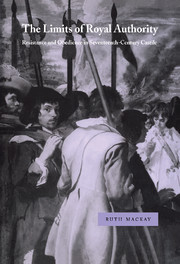3 - War, lords, and vassals
Published online by Cambridge University Press: 29 September 2009
Summary
For the hundreds of thousands of male villagers and townspeople in Castile who lived under seigneurial jurisdiction in the señorío, military levies had a similar significance as they did for dwellers in the royal domain (realengo). Local officials would be ordered to raise a certain number of men, there was usually a lottery to determine who would go, and the town council would use its discretion to round up vagabonds and malcontents. Appeals against conscription were heard by first-instance seigneurial justice officials but generally would follow the same pattern and involve the same arguments as in the rest of Castile. Along with these similarities, however, there were at least two ways in which seigneurial levies could be less harsh: Recruiters working for lords outside their estates often offered higher salaries to the men than did their royal counterparts, and frequent allusions by corregidores to mass flight across the realengo-señorío frontier indicates that men thought they could get more favorable treatment on the lord's side of the border.
If the immediate experience of recruitment was similar for all men, regardless of where they lived, seigneurial levies are distinctly instructive for understanding more about the location of power and authority during this period. The introduction of another layer between the men and the king could be good or bad for recruits: They had someone else to appeal to, someone who might be as unenthusiastic about the levy as they were, but at the same time they were subject to another potential source of oppression. Which option the lord took was indicative of his relationship to the king.
- Type
- Chapter
- Information
- The Limits of Royal AuthorityResistance and Obedience in Seventeenth-Century Castile, pp. 99 - 131Publisher: Cambridge University PressPrint publication year: 1999



